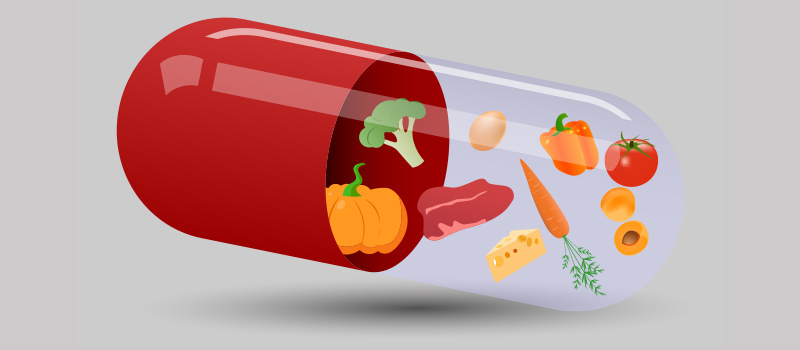Ready to talk about another healthy eating strategy that isn’t dieting? ME TOO. Especially with 2021 quickly approaching, and the phrase “I’ll worry about my weight in the new year” already circulating this holiday season. Today I’m going to dive into a topic that is not often a number one priority when I start working with a new client but is important to be aware of and shouldn’t be overlooked. That is micronutrients.
What are Micronutrients?
Micronutrients are vitamins, minerals, and other compounds such as phytonutrients that we need in appropriate amounts for normal metabolic and physiological processes. If we don’t get enough we won’t function properly and can get sick.
Yes, traditionally we put more emphasis on overall calories and macronutrients (carbs, fats, and proteins), however, some diets and programs focus more on how much than the actual what. When my husband talks to people about nutrition (he obviously became an expert immediately when I became a nutritionist) he shares the Twinkie example. Yes, you could follow the Twinkie diet and use those as your daily needed carbs, most of your calories, and still potentially lose weight- if that was literally all you ate. But, think about what you would be depriving your body of if that’s how you chose to fuel yourself regularly. That’s right, micronutrients.
Deficiency symptoms from missing vitamins in your diet like Vitamin A, E, and B12, can contribute to nagging, chronic health problems. It is time to think about the big picture and use the mindset that not only is food fuel, but also preventative medicine.
Why is it called a Vitamin?
The word vitamin originally comes from the Latin root “vita” or “life.” For the human body, vitamins participate in metabolic processes of growth, digestion, repair, energy transfer, nervous system function, and immunity. An important point to note is that we need them in our diet because we can’t make most vitamins ourselves.
When it comes to digestion and absorption of these nutrients, we categorize Vitamins and minerals as either fat-soluble or water-soluble. These water-soluble micronutrients are passively and actively absorbed in the GI tract (why gut health is so important) and are less likely to be stored because we are constantly taking in and excreting water. For this reason, we need to get these more often. Examples include B vitamins and vitamin C.
Fat-soluble vitamins are mostly passively absorbed in the GI tract and as expected by their name, they travel in the body bound to dietary fat. Meaning, if we don’t eat enough dietary fat, we may not effectively absorb, transport, or use these key vitamins appropriately. Healthy fats have slowly been making a comeback since the Fat-Free craze started back in the 1950s, and we have learned the necessity of them in our diet. Examples of these vitamins include A,D, E, and K.
How can I improve my diet by focusing on Micronutrients?
First off I do want to acknowledge that not every person needs the same micronutrients in the same amounts. There are numerous factors that influence personal vitamin need including biological sex, age, medications, stress, food choices, energy intake, activity levels, and illness or injury. Even beyond that, special considerations need to be kept in mind for plant-based diets, athletes, specific medications, disordered eating, and malabsorption syndromes.
Below I will provide some general recommendations that will benefit a majority of our population. Yes, in an ideal world we get all of our nutrients from the food we eat. However, I believe it is fair to say a majority of us do not achieve our ideal vitamin intake each day on our own. Because of this, we have created a nutritional gap between nutrients consumed in the diet vs nutrients required for optimal health.
There are numerous reasons behind the nutrient gap: not enough fruits and veggies in the diet, lack of a high-quality multivitamin, digestion issues, and fewer micronutrients available in the soil these days (since farming the same food in the same spots can decrease vitamin availability.)
If we look at these reasons as areas of opportunity and focus on what we can control personally, we will be more likely to succeed. So what do we do with these areas of opportunity? I recommend a change in our dietary focus regarding micronutrients to then drive improvements in everyday health.
Let’s fill in the gaps
Now that we know where our areas of opportunity lie, how can we change our current dietary focus to a healthier one?
Depending on your schedule, foods you typically eat, the number of meals eaten per day, fruits and veggies may not have been your main focus when it comes to nutrition. And now, I’m going to tell you why they should be.
The CDC recommends 1.5- 2 cups of fruit per day and at least 3 cups of vegetables. I don’t feel like that’s asking much honestly, but sadly as of research they conducted in 2017, only 1/10 Americans actually hit both of those totals. That blew my mind.
How do we improve on that? Are more veggies straws and dried apple chips the answer? Sorry but no. More whole food options of fruits and vegetables in the diet is the best place to begin. With my nutrition clients, I try to first focus on adding in more of the good, before necessarily removing the bad. Then sometimes the process takes care of itself.
Supplementation
Like I said earlier, ideally, our micronutrients, like our macronutrients, come from the foods we eat. However, it isn’t always enough. Thanks to years of continued research, we know that certain groups of a greater need can especially benefit from a multivitamin. Those populations include teens, athletes, the elderly, chronic disease patients, and those who take any medications putting them at risk for a nutrient deficiency as a side effect.
Now, know that when I say multivitamin I am mentioning something of high quality. When it comes to effective mineral digestion and absorption the most effective type of supplementary “vitamin” proves to be in capsule form. Not a tablet, and definitely not a gummy. Sorry gummy lovers, but you simply can’t digest, absorb, and put to good use the nutrients from that tasty chewable.
So, how do you know who to trust? I’ll be honest when I say the Costco brand is not always the best option. My number one rule when it comes to supplementation is to make sure the product is 3rd party tested. In the supplement industry, anything from vitamins to protein powders are not regulated by the FDA. This means some cheap companies, and even those you wouldn’t expect can sneak different fillers and ingredients into the product without putting them on the label.
I don’t know how you feel about that, but let’s be honest if I plan to take something every day to supplement my nutritional gap, you best believe I want to know 100% what’s in it.
So, who do you trust?
One company I have used for over four years now is Thorne. I’ll link our product dispensary here so anyone interested can check it out. I have flagged my favorite products and scientific articles that compile some of the latest research in the industry. They boast 3rd party testing by the National Sports Foundation, which drug tests every professional and college athlete in America for banned substances. If they say my product is clean I definitely trust them.
https://www.thorne.com/u/biancoprimarycare
The supplement industry can be overwhelming and remember my note earlier, your attempts to supplement your nutrition gap are personal to you. Please don’t hesitate to reach out to me with any questions on what options may be best for you and your family.
I do hope that this post inspires you to change your personal fueling strategies, and make addressing your nutritional gap a priority. Optimal vitamin intake specifically will help you boost your health in terms of metabolic growth, digestion, cellular repair, energy transfer, nervous system function, and arguably most importantly right now, immunity.


